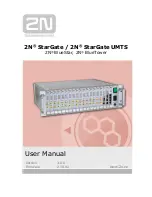
If the POST detects a problem, a series of beeps sound. See “Beep symptoms” on
page 123 and “Error messages” for more information.
Notes:
1. If you have a power-on password or administrator password set, you must type
the password and press
Enter
, when prompted, before POST will continue.
2. A single problem might cause several error messages. When this occurs, work
to correct the cause of the first error message. After you correct the cause of
the first error message, the other error messages usually will not occur the next
time you run the test.
Error messages
Note:
You must connect a keyboard, mouse, and monitor to your appliance in
order to see error messages. If the engine does not recognize the monitor,
keyboard, and mouse, reboot the engine while they are connected. If a
Remote Supervisor Adapter is used for system management, the logs can be
accessed remotely.
The table, “POST error codes” on page 140, provides information about the POST
error messages that can appear during startup.
Event/error logs
The POST error log contains the three most recent error codes and messages that
the system generated during POST. The System Event/Error Log contains all error
messages issued during POST and all system status messages from the Remote
Supervisor Adapter. In the event of a POST error, check the System Event/Error
Log, as it will contain the most recent errors. This log often provides an indicator as
to the nature of key failures.
To view the contents of the error logs, start the Configuration/Setup Utility program;
then select
Event/Error Logs
from the main menu (see “Starting the
Configuration/Setup Utility program” in Chapter 6 of the hardware installation guide
that came with this appliance).
SCSI messages
If you receive a SCSI error message while using the SCSISelect Utility, use the
following list to determine the cause of the error and the action to take.
One or more of the following conditions might be causing the problem:
v
A failing SCSI adapter or drive
v
An incorrect SCSI configuration
v
Duplicate SCSI IDs in the same SCSI chain
v
An incorrectly installed SCSI terminator
v
A defective SCSI terminator
v
An incorrectly installed cable
v
A defective cable
Verify that:
v
The external SCSI devices are powered on. External devices must be powered
on before powering on the NAS Gateway 300.
v
The cables or all external SCSI devices are connected correctly.
v
The last device in each SCSI chain is terminated correctly.
v
The SCSI devices are configured correctly.
92
NAS Gateway 300 User’s Reference
Summary of Contents for G27
Page 1: ...TotalStorage NAS Gateway 300 Model G27 User s Reference GA27 4321 00 ...
Page 8: ...viii NAS Gateway 300 User s Reference ...
Page 10: ...x NAS Gateway 300 User s Reference ...
Page 14: ...xiv NAS Gateway 300 User s Reference ...
Page 26: ...12 NAS Gateway 300 User s Reference ...
Page 40: ...26 NAS Gateway 300 User s Reference ...
Page 46: ...32 NAS Gateway 300 User s Reference ...
Page 68: ...54 NAS Gateway 300 User s Reference ...
Page 134: ...120 NAS Gateway 300 User s Reference ...
Page 136: ...122 NAS Gateway 300 User s Reference ...
Page 168: ...154 NAS Gateway 300 User s Reference ...
Page 182: ...168 NAS Gateway 300 User s Reference ...
Page 199: ......
Page 200: ... Printed in U S A GA27 4321 00 ...















































